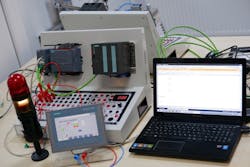Open-architecture HMIs enhance machine flexibility
Human-machine interfaces (HMIs) must strike a balance between cost and efficiency in modern machine design. Automation World examines the trade-offs between using a single, more comprehensive HMI versus multiple specialized HMIs.
While a single HMI can reduce initial costs and simplify the control interface, it may limit operational efficiency due to the cognitive load on operators. On the other hand, employing multiple HMIs can enhance task specialization, improve real-time monitoring and foster better communication among operators, albeit at a higher upfront cost.
This creates a need for a dynamic balance between these approaches, where the efficiency gains from specialized HMIs must be weighed against the overall system costs.
Additionally, Automation World underscores the importance of open-architecture HMIs, which offer compatibility with industry-standard hardware and software, facilitating easier customization and integration into diverse manufacturing environments. This adaptability is crucial as manufacturing operations increasingly require flexibility to meet varying production demands.
Read the full discussion on HMI effects on machine design in the full article from Automation World.

